The leading minds, philosophers and authors of their time.
711-1492
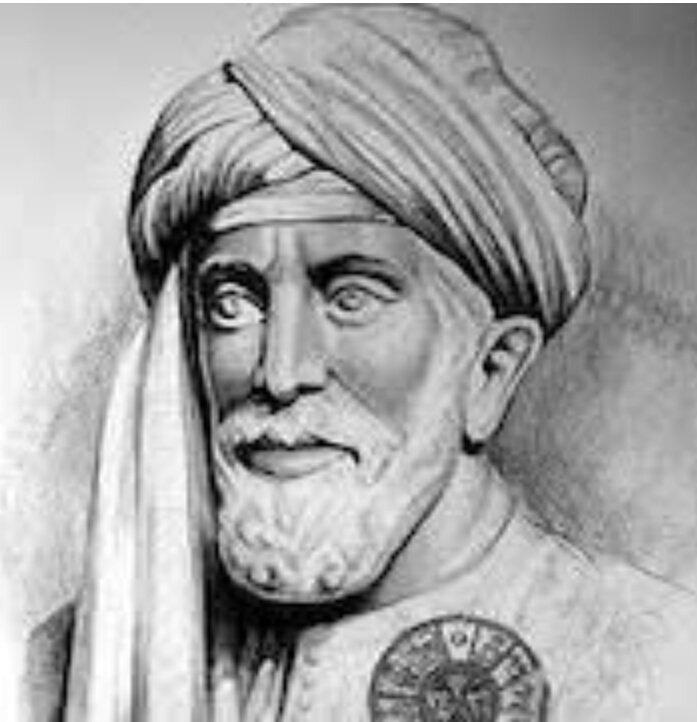
Born: 993
Died: c. 1055
Samuel ibn Naghrillah (Hebrew: ר׳ שְׁמוּאֵל הַלֵּוִי בֶּן יוֹסֵף הַנָּגִּיד, Sh'muel HaLevi ben Yosef HaNagid; Arabic: أبو إسحاق إسماعيل بن النغريلة ʾAbū ʾIsḥāq ʾIsmāʿīl bin an-Naghrīlah), also known as Samuel HaNagid (Hebrew: שמואל הנגיד, Shmuel HaNagid, lit. Samuel the Prince) (born 993; died 1056), was a medieval Jewish Spanish Talmudic scholar, grammarian, philologist, soldier, merchant, politician, and an influential poet who lived in Iberia at the time of the Moorish rule. His poetry was one area through which he was well known. He was perhaps the most politically influential Jew in Muslim Spain.
Samuel ibn Nagrela was the only practicing Jew in history to command Islamic armies in battle. He was a Talmudic scholar, philologist, poet, general and statesman who as Vizier of Granada (Kingdom in Spain) was the power behind the throne of caliphate of Granada for two decades.
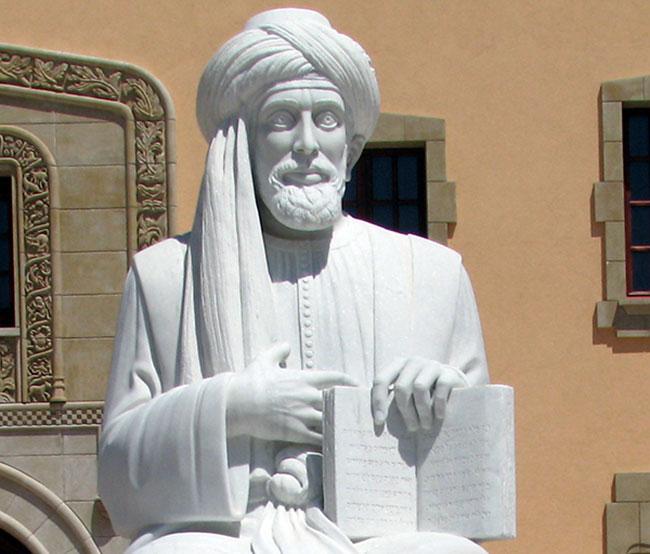
Born: 1021 or 1022
Málaga, Caliphate of Cordoba
Died: 1070 (1050?, 1058?)
Valencia, Taifa of Valencia/Toledo
Other names: Avicebron, Avicebrol
Notable work:
Fons Vitæ
Era: Medieval philosophy
Region: Jewish philosophy
School: Neoplatonism
Main interests: Religious philosophy
Solomon ibn Gabirol or Solomon ben Judah (Hebrew: ר׳ שְׁלֹמֹה בֶּן יְהוּדָה אִבְּן גָּבִּירוֹל, romanized: Shlomo Ben Yehuda ibn Gabirol, pronounced [ʃ(e)loˈmo ben jehuˈda ʔibn ɡabiˈʁol]; Arabic: أبو أيوب سليمان بن يحيى بن جبيرول, romanized: ’Abū ’Ayyūb Sulaymān bin Yaḥyá bin Jabīrūl, pronounced [ˈʔæbuː ʔæjˈjuːb sʊlæjˈmæːn bɪn ˈjæħjæː bɪn dʒæbiːˈruːl]) was an 11th-century Andalusian poet and Jewish philosopher in the Neo-Platonic tradition. He published over a hundred poems, as well as works of biblical exegesis, philosophy, ethics[1]: xxvii and satire.[1]: xxv One source credits ibn Gabirol with creating a golem, possibly female, for household chores.
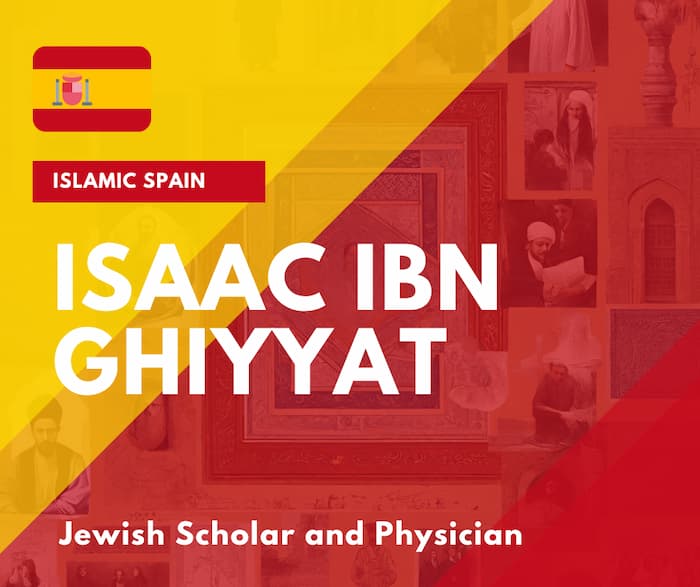
Born: 1030/38
Died: 1089
Cordoba
Notable work:
Mishneh Torah
The Guide for the Perplexed
Spouse(s): (1) daughter of Nathaniel Baruch (2) daughter of Mishael Halevi
Era: Medieval philosophy
12th-century philosophy
Region: Middle Eastern philosophy
Jewish philosophy
School: Aristotelianism
Main interests: Religious law, Halakha
Notable ideas: Oath of Maimonides, Maimonides' rule, Golden mean, 13 principles of faith.
Isaac ben Judah ibn Ghiyyat (or Ghayyat) (Hebrew: יצחק בן יהודה אבן גיאת, Arabic: ﺇﺑﻦ ﻏﻴﺎث ibn Ghayyath) (1030/1038–1089) was a Spanish rabbi, Biblical commentator, codifier of Jewish law, philosopher, and liturgical poet. He was born and lived in the town of Lucena, where he also headed a rabbinic academy. He died in Cordoba.
According to some authorities he was the teacher of Isaac Alfasi; according to others, his fellow pupil. His best-known students were his son Judah ibn Ghayyat, Joseph ibn Sahl, and Moses ibn Ezra. He was held in great esteem by Samuel ha-Nagid and his son Joseph, and after the latter's death (1066), Ibn Ghayyat was elected to succeed him as rabbi of Lucena, where he officiated until his death.
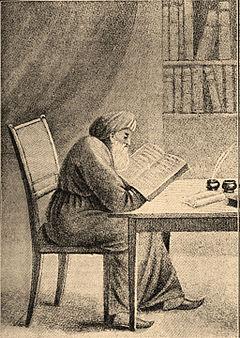
Born: 1013
Qalaat Beni Hammad, present day Algeria
Died: 1103
Lucena, Al-Andalus
Other names: Rif
Occupation: Rabbi
Isaac ben Jacob Alfasi ha-Cohen (1013–1103) (Hebrew: ר' יצחק אלפסי, Arabic: إسحاق الفاسي) - also known as the Alfasi or by his Hebrew acronym Rif (Rabbi Isaac al-Fasi),[1] was a Maghrebi Talmudist and posek (decider in matters of halakha - Jewish law). He is best known for his work of halakha, the legal code Sefer Ha-halachot, considered the first fundamental work in halakhic literature. His name "Alfasi" means "of Fez" in Arabic, but opinions differ as to whether he ever lived in Fez.
More on Isaac ben Jacob Alfasi ha-Cohen
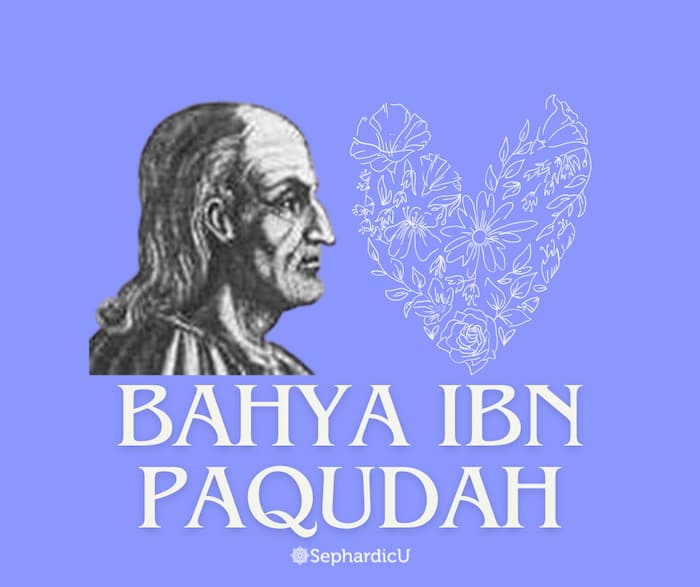
Born: 1050
Zaragoza, Spain
Died: 1120
Zaragoza, Spain
Baḥyā ben Joseph ibn Paqūda, the Jewish Neoplatonist, was the author of the first systematic philosophic work on ethics in the Jewish tradition. Beyond the fact that he served as a judge (dayyan ) of the rabbinical court in Saragossa, details of his life are unknown. About 1040 he wrote in Arabic Al-Hidaja ila Faraid al-Qulub (Guide to the duties of the heart). This work, as translated into Hebrew about 1160 by Judah ibn Tibbon, under the title Hoboth Ha-Lebaboth (Duties of the Heart ), has achieved great popularity, both in full text and in abridged versions.
More on Bahya ben Joseph ibn Paquda
Born: late 11th century
Died: early 12th century
Occupation: Talmudist
Judah ben Barzillai (Albargeloni) was a Catalan Talmudist of the end of the 11th and the beginning of the 12th century. Almost nothing is known of his life. He came of a very distinguished family, on account of which he was not seldom called "ha-Nasi" (the prince), a title of honor borne also by his descendants in Barcelona.
Judah was one of the greatest codifiers of the Middle Ages. With the exception of a few fragments, his halakhic writings have been lost. However, they are often cited as authoritative by Rabad II, Isaac ben Abba Mari (for both of whom he is simply "HaRav," or "HaRav haMeḥabber"), Abraham ben David (RABaD III), and Zerahiah ben Isaac ha-Levi.
More on Judah ben Barzillai (Albargeloni)
Born: c. 1055 – 1060
Granada
Died: after 1138
Other names: Ha-Sallaḥ
School: Jewish philosophy
Rabbi Moses ben Jacob ibn Ezra, known as Ha-Sallaḥ ("writer of penitential prayers") (Arabic: أَبُو هَارُون مُوسَى بِن يَعْقُوب اِبْن عَزْرَا, Abu Harun Musa bin Ya'qub ibn 'Azra, Hebrew: מֹשֶׁה בֵּן יַעֲקֹב הסַּלָּח אִבְּן עֶזְרָא, Moshe ben Ya'aqov ha-Sallaḥ ibn 'Ezra) was a Jewish, Spanish philosopher, linguist, and poet. He was born in Granada about 1055 – 1060, and died after 1138. Ibn Ezra was Jewish by religion but is also considered to have had great influence in the Arabic literary world. He is considered one of Spain's greatest poets and was thought to be ahead of his time in terms of his theories on the nature of poetry. One of the more revolutionary aspects of Ibn Ezra's poetry that has been debated is his definition of poetry as metaphor and how his poetry illuminates Aristotle's early ideas. The impact of Ibn Ezra's philosophical works was minor compared to his impact on poetry, but they address his concept of the relationship between God and man.
More on Rabbi Moses ben Jacob ibn Ezra
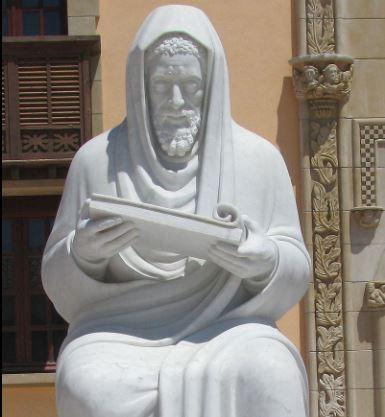
Born: c. 1075
Toledo or Tudela, Al-Andalus
Died: 1141 (66 years)
Jerusalem, Kingdom of Jerusalem
Notable work:
Sefer ha-Kuzari
Era: Medieval philosophy
Region: Jewish philosophy
Main interests: Religious philosophy
Halevi is considered one of the greatest Hebrew poets, celebrated both for his religious and secular poems, many of which appear in present-day liturgy. His greatest philosophical work was the Sefer ha-Kuzari.
As a youth, he seems to have gone to Granada, the main center of Jewish literary and intellectual life at the time, where he found a mentor in Moses Ibn Ezra. Although it is often said that he studied in the academy at Lucena, there is no evidence to this effect. He did compose a short elegy on the death of Isaac Alfasi, the head of the academy.[5] His aptitude as a poet was recognized early. He was educated in traditional Jewish scholarship, in Arabic literature, and in the Greek sciences and philosophy that were available in Arabic. As an adult he was a physician, apparently of renown, and an active participant in Jewish communal affairs. For at least part of his life he lived in Toledo and may have been connected with the court there as a physician.
More on Judah Halevi
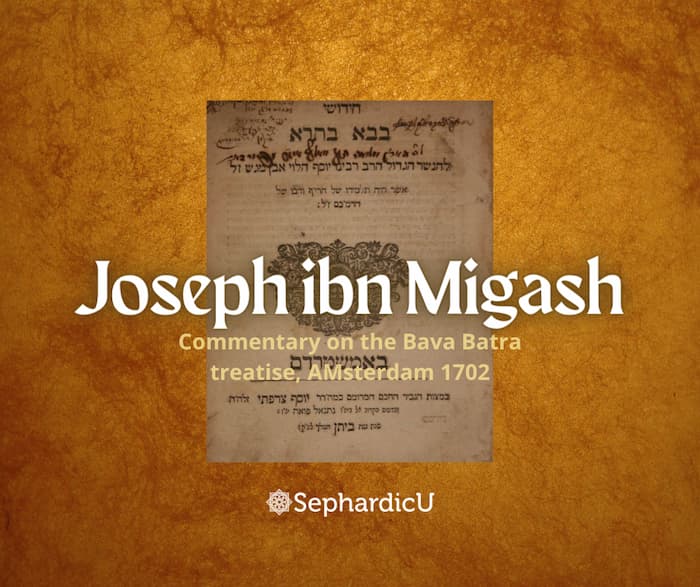
Born: 1077
Seville (or Granada)
Died: 1141
Other Name: Ri Migash Occupation: Rabbi, Posek, Rosh Yeshiva of Lucena
Joseph ibn Migash or Joseph ben Meir HaLevi ibn Migash or Yosef Ibn Meir Ha-Levi Ibn Megas or José ben Meir ibn Megas (early 1077 – c. 1141) (Hebrew: יוסף בן מאיר הלוי אבן מיגאש) was a Rabbi, Posek, and Rosh Yeshiva in Lucena (actually Spain). He is also known as Ri Migash (ר"י מיגאש), the Hebrew acronym for "Rabbi Joseph Migash".
Considered the greatest Spanish Talmudic scholar of the third generation of Spanish rabbis. He studied first under Isaac b. Baruch *Albalia, and at the age of 12 went to Lucena where he studied under Alfasi for 14 years. His teacher encouraged him, ordained him as rabbi and greatly honored him, even nominating him his successor as head of the yeshivah, though his own son was a Talmudic scholar. Ibn Migash occupied this post for 38 years, until his death.
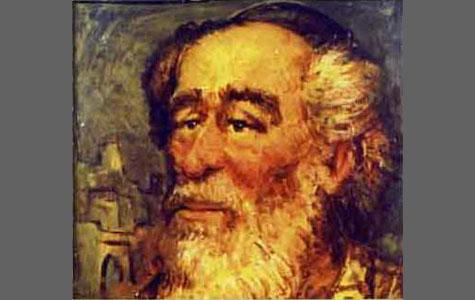
Born: c. 1089 - 1092
Tudela, Taifa of Zaragoza
Died: c. 1164 - 1167
Known for: writing commentaries, grammarian
Children: Isaac ben Ezra
Abraham ben Meir Ibn Ezra was one of the most distinguished Jewish biblical commentators and philosophers of the Middle Ages. He was born in Tudela, Taifa of Zaragoza and present-day Navarre.
Ibn Ezra was a close friend of Judah Halevi, who was some 14 years older. When Ibn Ezra moved to Córdoba as a young man, Halevi followed him. This trend continued when the two began their lives as wanderers in 1137. Halevi died in 1141, but Ibn Ezra continued travelling for three decades, reaching as far as Baghdad. During his travels, he began to compose secular poetry describing the lands through which he was travelling as well as beginning to pen the deeply rational Torah commentaries he would be best remembered for.
More on Abraham ben Meir Ibn Ezra
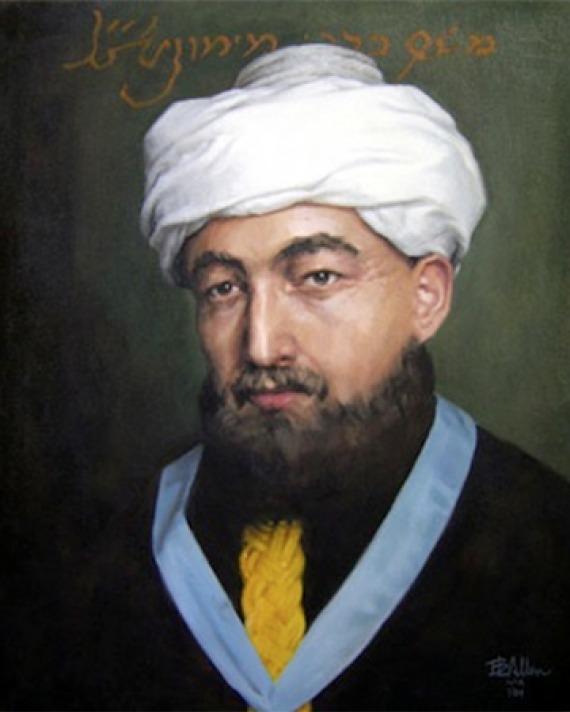
Born: 30 March or 6 April 1135
Possibly born 28 March or 4 April 1138
Córdoba, Almoravid Empire
Died: 12 December 1204 (66-69 years old)
Fostat, Ayyubid Sultanate
Notable work: Mishneh Torah
The Guide for the Perplexed
Spouse(s): (1) daughter of Nathaniel Baruch (2) daughter of Mishael Halevi
Era: Medieval philosophy
12th-century philosophy
Region: Middle Eastern philosophy
Jewish philosophy
School: Aristotelianism
Main interests: Religious law, Halakha
Notable ideas: Oath of Maimonides, Maimonides' rule, Golden mean, 13 principles of faith.
Moses ben Maimon (1138–1204), commonly known as Maimonides (/maɪˈmɒnɪdiːz/) and also referred to by the acronym Rambam (Hebrew: רמב״ם), was a medieval Sephardic Jewish philosopher who became one of the most prolific and influential Torah scholars of the Middle Ages. In his time, he was also a preeminent astronomer and physician, serving as the personal physician of Saladin. Born in Córdoba, Almoravid Empire (present-day Spain), on Passover eve, 1138 (or 1135), he worked as a rabbi, physician and philosopher in Morocco and Egypt. He died in Egypt on 12 December 1204, whence his body was taken to the lower Galilee and buried in Tiberias.
More on Moses ben Maimon "Maimonides" "Rambam"
c. 1260–1479
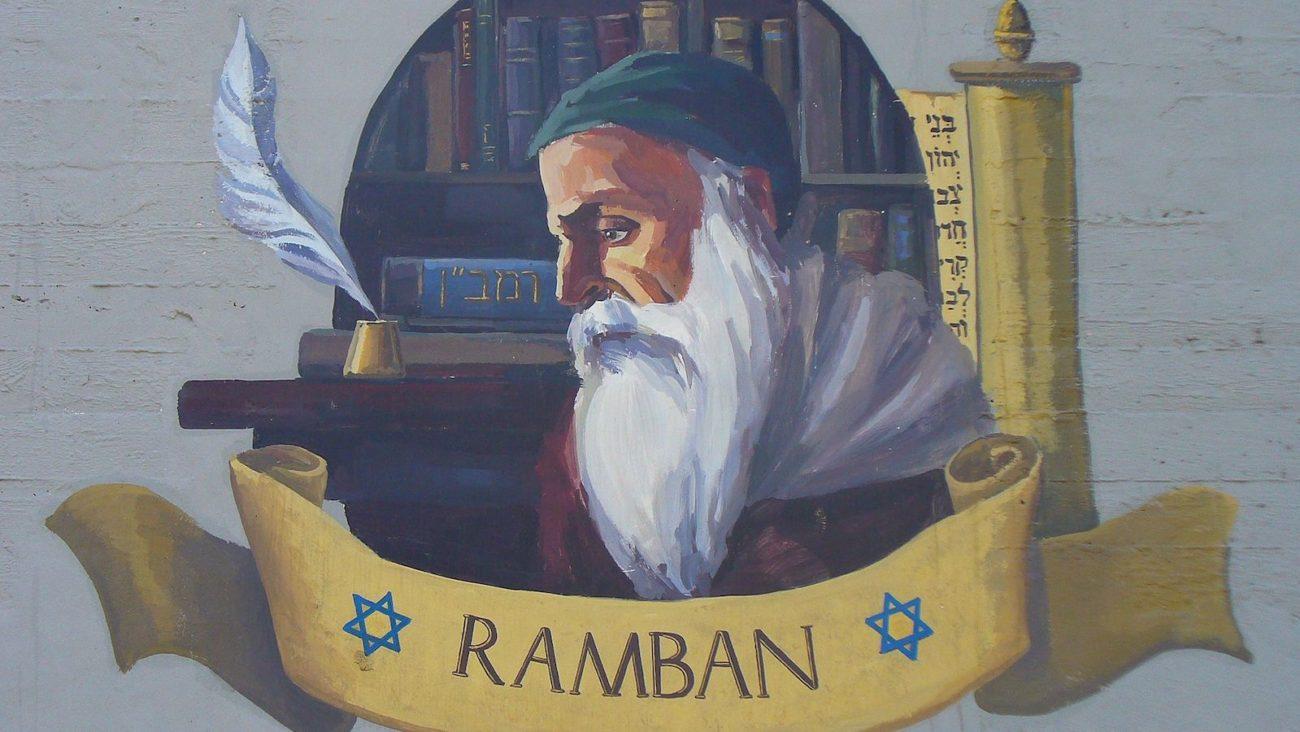
Born: 1194
Girona, Crown of Aragon (present-day Spain)
Died: 1270
Acre, Kingdom of Jerusalem
Era: Medieval philosophy
Region: Jewish philosophy
Main interests: Religious law
Moses ben Nachman (Hebrew: Meh ben-Nmn, "Moses son of Nachman," 1194–1270), also known as Nachmanides, Ramban, and by his modern moniker Bonastruc ça Porta (literally, "Mazel Tov near the Gate," was a prominent Sephardic rabbi, philosopher, physician, kabbalist, and biblical commentator during the Middle Ages. In Girona, Catalonia, he was bred, educated, and spent the most of his life. He is also regarded as a key player in the revival of the Jewish population in Jerusalem after the Crusaders destroyed it in 1099.
Born: 1235
Barcelona, Catalonia, Aragon
Died: 1310 (aged 74–75)
Barcelona, Catalonia, Aragon
Religion: Judaism
Shlomo ben Avraham ibn Aderet (Hebrew: שלמה בן אברהם אבן אדרת or Solomon son of Abraham son of Aderet) (1235 – 1310) was a medieval rabbi, halakhist, and Talmudist. He is widely known as the Rashba (Hebrew: רשב״א), the Hebrew acronym of his title and name: Rabbi Shlomo ben Avraham.
The Rashba was born in Barcelona, Crown of Aragon, in 1235. He became a successful banker and leader of Spanish Jewry of his time. As a rabbinical authority his fame was such that he was designated as El Rab d'España ("The Rabbi of Spain"). He served as rabbi of the Main Synagogue of Barcelona for 50 years. He died in 1310.
Born: 1240
Died: 1305
The Spanish rabbi and Kabbalist Moses de León (c. 1240–1305), also known as Moshe ben Shem-Tov, is credited with making the Zohar widely known. Despite his assertion that he took traditions dating back to Rabbi Shimon bar Yohai and committed them to writing, contemporary academics think the Zohar is his original creation. His other writings include the Hebrew book Sefer ha-Rimon as well as other pseudepigraphic responsa, commentaries, and kabalistic tracts that he erroneously claimed to be the work of prior scholars.
"The contents of the book have been acknowledged and authorized by all cabalists, and can by no means be regarded as mere inventions and forgeries of Moses de Leon," the Jewish Encyclopedia's entry on de Leon concludes.
Born: c. 1260
Seville, Spain
Died: c. 1314
Known for: Commentaries on Talmud
Yom Tov ben Abraham of Seville (c. 1260 – 1320; also Asevilli, Assevilli, Ashbili) commonly known by the Hebrew acronym Ritva, (Hebrew: ריטב"א) was a medieval rabbi and rosh yeshiva of the Yeshiva of Seville, known for his commentaries on the Talmud.
Asevilli was born in the city of Seville, Spain around 1260. His name, Asevilli is itself a topographic surname that identifies him as being from Seville.
He was the student of Solomon ibn Adret and Aaron ha-Levy. His works suggest that he spent some time studying in France. He spent most of his life in Zaragoza. He died between 1314 and 1328.
He was the rabbi and head of the Yeshiva of Seville in Spain.
Born: Isaac Aboab
Aragon
Died: Toledo, Spain
Religion: Judaism
Children: Abraham Aboab II
Parents: Abraham Aboab (father)
Main work: Menorat ha-Maor
Dynasty: Aboab
His father, Rav Abraham Aboab, was most likely born in Aragon and had a close association with the Aragonese Crown. In 1263, James I of Aragon gave him property and a heraldic achievement. Rabbi Isaac began his career as a trader and later settled in Toledo, Castile, approximately 1300. Jacob Berab was one of his students while he ran his own yeshiva in Toledo. Later, he served as Toledo's rabbi while mostly teaching Jewish ethics. As he neared the end of his life, he spent a significant amount of time writing and preaching because he believed that the great Talmudic academics and significant centers of study of his day were out-of-date.
He lived during a time of intellectual decline when men tended to be eclectic, when the Jews for whom he wrote still spoke and understood Arabic. He was a philosopher with deep rabbinical knowledge who favored mystic interpretations of the Mosaic rituals and regulations. Although solely from secondary sources, he frequently quoted Plato and Aristotle and made an effort to illustrate passages from the Talmud and the midrashic literature, with which he was particularly familiar. He is occasionally mistaken for his great-great-grandson Isaac Aboab II, a late 15th-century bible commentator in Castile.
Born: 1249
Died: 1315
Famous Catalan Talmudist, Maimonidean, and Meiri or Hameiri, Menachem ben Solomon Meiri or Hameiri lived from 1249 to 1315. Perpignan, which was then a part of the Principality of Catalonia, was the birthplace of Menachem Meiri in 1249. He was the pupil of Chaim of Narbonne, France's Rabbi Reuven.
One of the most important works ever written on the Talmud is his commentary, the Beit HaBechirah (literally, "The Chosen House," a play on a different name for the Temple in Jerusalem, suggesting that the Meiri's work selects specific content from the Talmud while leaving out the discursive elements). This book is organized similarly to the Talmud, providing the mishnah first and then outlining the discussions that are made about it. It is less a commentary and more of a digest of all the remarks in the Talmud. According to Haym Soloveitchik, it is as follows:
Meiri is the only medieval Talmudist (rishon) whose writings can almost entirely be read separately from the Talmudic text that they purport to comment. There is no ongoing commentary on the Talmud in the Beit ha-Behirah. Meiri purposefully omits the back-and-forth of the sugya in a quasi-Maimonidean manner; instead, he concentrates on the discussion's conclusion and offers the many points of view on it. Additionally, he is the only one who actively gives the reader background knowledge. In the collection of rishonim, his works are the closest thing to a secondary source.
He frequently quotes the Jerusalem Talmud, unlike the majority of rishonim, and does so with textual variations that are no longer present in other sources.
Many prominent Rishonim are cited by Beit HaBechirah, however they are not identified by name but rather by honorific titles. Specifically:
Born: c. 1250
probably Cologne, Holy Roman Empire
Died: 24 October 1327
Toledo, Castile
Religion: Judaism
Children: Judah ben Asher
Jacob ben Asher
Nahala: 9 Cheshvan
The Rosh most likely was born in Toledo and the Holy Roman Empire's Cologne. His father Yechiel was a Talmudist, and Rabbi Eliezer ben Nathan was one of his predecessors. His family was well-known for its scholarship and religiosity (the RaABaN). Jacob, the author of the Arba'ah Turim, and Judah were two of Asher's eight sons who achieved the highest fame.
After King Rudolf I renewed the persecution of Jews in 1286, Rabbi Meir of Rothenburg, a revered Rosh instructor, fled Germany but was later apprehended and imprisoned. To avoid inciting the imprisonment of other rabbis, Rabbi Meir declined the ransom offered by the Rosh for his release. After that, the Rosh took over Rabbi Meir's duties in Worms. But he was compelled to leave (in all likelihood, a victim of blackmail by the government, aimed at acquiring his fortune).
He left Germany and lived in southern France before moving to Toledo, Spain, where he was appointed rabbi on the advice of Rabbi Solomon ben Abraham Aderet (RaShBA). Judah, Rabbenu Asher's son, attested that his father passed away in squalor. On 9 Cheshvan 5088 in Toledo, Rabbeinu Asher passed away (1327 CE). The persecutions that followed in Spain in 1392 are believed to have resulted in the deaths of his known surviving children.
Born: c. 1269
Cologne, Holy Roman Empire
Died: c. 1343
Toledo, Castile
Religion: Judaism
Parents: Asher ben Jehiel (father)
Jacob ben Asher, also known as Rabbi Yaakov ben Raash (Rabbeinu Asher) and Ba'al ha-Turim, was a significant Medieval rabbinic figure. He lived from around 1269 to around 1343. In honor of his primary contribution to Jewish law, the Arba'ah Turim, he is frequently referred to as the Ba'al ha-Turim ("Master of the Columns") ("Four Columns").
He most likely was born in Cologne, then in the Holy Roman Empire, around 1269, and most likely passed away in Toledo, then in the Kingdom of Castile, around 1343.
He was the third child of the Holy Roman Emperor's Rabbi Asher ben Jehiel, also known as the "Rosh," who relocated to Castile as a result of growing anti-Jewish persecution in his native Germany. Along with his father, who served as his primary teacher, Jacob frequently references his older brother Jehiel in the Turim, as well as Judah once and Rabbi Chaim once. Many claim that Jacob was not born in Castile but rather went there with his father.
Some claim that Jacob replaced his father as the leader of Toledo's Jewish community (Zacuto), while others assert that Judah ben Asher held that position. His brothers were also rabbis in several Iberian villages. He spent the majority of his life in extreme poverty, and the Sephardic Community of Chios claims that while traveling, he and his ten companions fell ill and perished on the Greek island of Chios.
Born: 1320, 9th of Shevat
Died: 1376
Nissim ben Reuven (1320 – 9th of Shevat, 1376, Hebrew: נִסִּים בֶּן רְאוּבֵן) of Girona, Catalonia was an influential talmudist and authority on Jewish law. He was one of the last of the great Spanish medieval Talmudic scholars. He is also known by his Hebrew acronym, the RaN (ר"ן), or else with the definite article HaRaN (הר"ן), as well as by the name RaNbaR (רנב"ר), the Hebrew acronym of his full name, including his father's name, Reuven (ראובן),[1] and also by Nissim Gerondi.
Nissim was born in the Catalan city of Barcelona. He possessed knowledge of astronomy and was a doctor. Although he refers to his father (Reuben ben Nissim) as "my father and teacher" in his writings and alludes to an R. Perez as morenu ("our teacher"), it's possible that his father served as his primary teacher.
He established a yeshiva in Barcelona and served as a judge and educator for the Jewish community there. He called out the wealthy residents of the neighborhood for their actions, but this incited a furious response from them. He was victimized by certain strong and rich Jews in his town who even lied about him and other prominent rabbis in front of the government. They even spent five months in jail before their innocence was established. Nissim was a member of the committee that produced the petition that the Spanish Jews united to present to the king pleading for his protection.
Isaac ben Sheshet and Hasdai Crescas were his closest pupils.
fl. 1340
He allegedly studied under Jacob ben Asher (son of Asher ben Yechiel). This point of view first appears in Shem Gedolim by Chaim Yosef David Azulai. A full list of authorities, up to and including Jacob ben Asher, is provided by Abudarham. He also describes being a "friend" of Jacob ben Asher and residing at Asher ben Jehiel's home.
He is thought to be the ancestor of Solomon Abudarham, the Chief Rabbi of Gibraltar (who died in 1804).
Abudarham belonged to the group of authors who saw the necessity to communicate the wisdom found in diverse works of rabbinical literature to the general public at an era of decline. His book, known as Sefer Abudarham in popular culture, has no official title other than "Commentary on the Blessings and Prayers" (ibbur Perush haBerakhot vehaTefillot), which is most likely because it was created to act as a running commentary to the liturgy. He claims in the prologue that his goal was to provide the populace with the knowledge necessary to use the liturgy intelligently. To this end, he gathered material from the Babylonian and Jerusalem Talmuds, the Geonim, and all commentators up to and including his own time, the information needed to explain each section of the prayer book.
Born: 1350
Died: 1415
Isaac ben Moses ha-Levi, better known by his pen name Profiat Duran (c. 1350–c. 1415), was a Jewish apologist/polemicist, philosopher, physician, grammarian, and contentiousist in the 14th century. In the future, he was occasionally referred to by the nickname Efodi () in connection with his two grammars, both of which were titled "Ephod." He also appears in official records with his converso Christian name Honoratus de Bonafide after being forcibly converted in 1391. He returned to openly practice Judaism after fleeing Spain, and he also published several works, including polemics against Christianity and grammar.
It is unknown if he was born in Perpignan, where he spent some time, or in a different Catalan city. He briefly attended a Talmudic school in Germany when he was younger, but against his teachers' warnings, he also studied philosophy and other sciences in addition to the Talmud. Duran worked as a tutor for the Crescas family and was forcibly baptized into the marrano religion during the bloody riots of 1391.
He returned to openly practice Judaism after fleeing Spain, and he also published several works, including polemics against Christianity and grammar. It is unknown if he succeeded in his endeavor to get to Palestine, however it appears that he made the attempt. He expired in Iberia around 1414 or 1415 in France, or the East.
Born: 1360
Died: 1463
Spanish rabbi Isaac ben Jacob Canpanton (1360–1463) used the Hebrew name. He lived in a time when Spanish Jews' intellectual life and Talmudic knowledge were declining, a time marred by the atrocities of Vicente Ferrer and Ferrand Martinez. Three historians—Immanuel Aboab (Nomologia, ii. 2), Zacuto (Yuasin, ed. Filipowski, p. 226b; see Seder ha-Dorot, pp. 27b, 28a) and Joseph ben Zaddik (Neubauer, Anecdota Oxoniensia, i. 99)—join forces to deem Canpanton a gaon, Among his students, Isaac Aboab, Isaac De Leon, and Samuel (ibn Sadillo) al-Valensi should be mentioned. In 1463, he perished in Peafiel.
Only one book—Darche ha-Gemara, also known as Darche ha-Talmud, or "A Methodology of the Talmud"—was left by him, but it is a significant contribution to the field because it aims to serve as a useful manual for those who are asked to teach the Talmud. Constantinople, around 1520; Venice, 1565; Mantua, 1593; Amsterdam, 1706; Vienna, 1891 (edited by Isaac H. Weiss); Jerusalem, 1981; and Jerusalem, 2020.
Born: 1412
Died: 1493
Abraham Seneor or Abraham Senior was a senior member of the Castilian aristocracy, a Sephardic rabbi, banker, and politician who lived in Segovia from 1412 to 1493. He was also the patriarch of the Coronel family and the last Crown rabbi of Castile (almojarife of the Castile or royal administrator). He founded the Coronel aristocratic family in 1492 when, at the age of 80, he converted to Roman Catholicism, assuming the name Ferran, Fernan, or Fernando Pérez Coronel.
Born: 1433
Died: January 1493
A Spanish-Jewish Rabbi, Posek, and Torah commentator, Isaac Aboab of Castile (also known as Isaac Aboab II) lived from 1433 to January 1493.
Born at Toledo, the great great grandson of Isaac Aboab I. He was referred to be "the last gaon of Castile" and was Isaac Campanton's pupil and successor. He traveled to Lisbon in 1492 with 30 other prominent Jews to negotiate with King John II of Portugal for the acceptance of his exiled people after Ferdinand and Isabella issued the expulsion proclamation. He and his pals were given permission to live well in Porto. A few months after the expulsion, he passed away. Abraham Zacuto, a mathematician and his student, gave the eulogy at his funeral. Many of Aboab's followers achieved high distinction. The following excerpts from his writings have been published:
Born: Isaac ben Judah Abarbanel
1437
Lisbon, Kingdom of Portugal
Died: 1508 (aged 70–71)
Venice, Republic of Venice
Era: Medieval philosophy
Region: Jewish philosophy
Main interests: Religious philosophy
Abarbanel was born into one of the most illustrious and venerable Iberian Jewish families in Lisbon, Portugal. [3] The Abravanel or Abarbanel family had managed to flee the 1391 carnage in Castile. He studied under Lisbon's chief rabbi, Joseph Chaim,[4] and spent his formative years immersed in the study of Jewish philosophy. He became well-versed in rabbinic literature and in the intellectual currents of the day. According to Abarbanel, Joseph ibn Shem-Tov served as his mentor. At the age of twenty, he wrote on religion, prophesy, and the primordial form of the natural elements. Along with his intellectual prowess, he also demonstrated a solid command of financial affairs. King Afonso V of Portugal took notice of this and hired him as treasurer.
He helped his fellow believers by using his powerful position and the substantial fortune he had received from his father. The Jewish prisoners were at risk of being sold as slaves when his patron Afonso conquered the Moroccan city of Arzila. The majority of the money required to liberate them came from Abarbanel, who also personally organized collections across Portugal. In support of the prisoners, he also sent a letter to his affluent and intelligent friend Vitale (Yehiel) Nissim da Pisa.
Because Afonso died, he was forced to resign from his position after King John II accused him of conspiring with the Duke of Braganza, who had been beheaded for a conspiracy. Abarbanel fled to Castile in a hurry in 1483 after receiving a timely warning. A royal order stole his enormous fortune.
Era: Late 14th century
Vidal of Tolosa, also known as Vidal de Toulouse (Hebrew: ), was a Spanish rabbi and scholar who lived in the late 14th century. He is also known by the nickname Harav Ha-Maggid, or the Maggid Mishneh, after his most famous work of literature of the same name.
It would seem from his name that he was from a place called Tolosa. The Hida and other authors claimed that he was from Tolosa, Spain, whereas contemporary researcher Israel Netanel Rubin gave Toulouse as the location of his birth. He resided in Villefranche-de-Conflent before moving to Barcelona, where he authored Maggid Mishneh and met Nissim of Gerona. According to the introduction of Joseph Caro's Kesef Mishneh, Vidal and Nissim of Gerona were likely close friends.
Isaac Vidal, a well-known academic who lived in Alcala and corresponded with Isaac ben Sheshet, was Vidal's son.
1492-1800
Born: 1479
Spain
Died: 1573
Safed
Religion: Judaism
Semicha: Joseph Saragossi
Around 1479, the Radbaz was born in Spain. When his family was expelled from Spain, along with all other Spanish Jews, he was thirteen years old. His parents made their home in Safed, Mamluk Sultanate, where he attended school under Joseph Saragossi's guidance.
He departed the Land of Israel at the age of 31 or 32 for unclear reasons, moving to Wattasinid Fez, where he joined the beth din, the rabbinical court headed over by the nagid Isaac Sholal.
The Radbaz relocated to Cairo in 1517 after the Turkish government abolished the position of nagid. He was given the title of Chief Rabbi of Egypt, or Hakham Bashi, which he held for forty years. For his enormous benevolence, moral rectitude, and depth of knowledge, he was held in the highest regard. The Radbaz was a successful trader with contacts abroad who was independently wealthy. He established and maintained a yeshiva that drew many notable students, including Isaac Luria and Bezalel Ashkenazi.
When he turned 90, the Radbaz gave up his position as chief rabbi and distributed the majority of his wealth to the needy, with a focus on Torah scholars. Later, he relocated to Jerusalem. Due of the onerous taxes the Ottoman Empire levied on Jews, he did not stay there for very long, though. He made Safed, the Safad Sanjak's capital, his home. There, he actively participated in the rabbinical court headed over by Joseph Karo, who held him in high regard. He continued to learn and write during the final 20 years of his life, which he spent in tranquility.
At the age of 94, The Radbaz passed away in Safed in 1573.
Born: 1474
Died: April 3, 1546
Castilian Spain's Maqueda, close to Toledo, is where Berab was born. Later, he was taught by Isaac Aboab. He fled to Fez following the expulsion of Jews from Spain. Even though he was only a young man of eighteen, the 5,000-family-strong Jewish community of Fez picked him to be their rabbi. He next traveled to Tlemçen, which was at the time the capital of the Barbary states. Even though he was only a young man of eighteen, the 5,000-family Jewish community there chose him to be their rabbi. The following remarks from Abraham Gavison provide evidence of the high regard in which he was held there: "Do not claim that Israel's candle of the Law is extinguished. Jacob Berab has returned to live with us once more!"
The length of Berab's stay in Algeria is unknown, however he was previously in Jerusalem prior to 1522. However, the social and economic conditions there were so deplorable that he did not stay long and instead traveled to Egypt with his students. Berab moved to Safed, which at the time had the largest Jewish community in Ottoman Syria, a few years after becoming a rabbi in Cairo in 1533. A few years after that, he appears to have firmly established there. There, Berab had the audacious thought that would later make him famous: the creation of a central Jewish spiritual power.
Born: 1480
Died: 1545
From 1525 until his passing in 1545, Levi ibn Habib (c. 1480–c. 1545), commonly known by the initials HaRaLBaCh, served as Jerusalem's Chief Rabbi.
When he was approximately seventeen, under King Manuel of Portugal, he was forced to submit to baptism, but at the first chance, he fled to Salonica, where he could safely follow the dictates of his conscience. He left for Jerusalem in 1523 but soon came back to Salonica. He made Jerusalem his permanent home in 1525, and thanks to his education, he was appointed chief rabbi. There he met Jacob Berab, who he frequently disagreed with about issues of rabbinical law.
When Berab took over as Safed's head rabbi and reinstated the traditional process of ordaining rabbis, a heated argument erupted between these two rabbis. For a while, they engaged in a sour and heated argument during which Berab brought up Ibn Habib's conversion to Christianity. The latter openly acknowledged the truth, but he emphasized that he was still a young man at the time, that his forced conversion to Christianity had lasted for only a short period, and that he had seized the first chance to leave and return to his fathers' religion. The habit of ordaining people again soon after Berab's passing was primarily because to this disagreement.
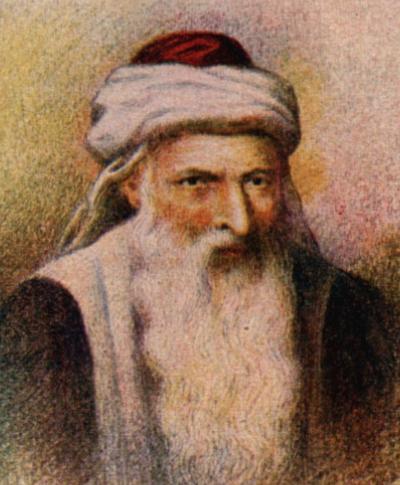
Title: הַמְחַבֵּר HaMechaber
מָרַן Maran
Born: Joseph ben Ephraim Karo, 1488, Toledo, Kingdom of Toledo, Crown of Castile
Died: March 24, 1575
Safed, Damascus Eyalet, Ottoman Empire
Religion: Judaism
Buried: Safed, Israel
The final significant code of Jewish law, the Beit Yosef, and its widely used equivalent, the Shulchan Arukh, were written by Joseph ben Ephraim Karo, often known as Yosef Caro or Qaro (Hebrew: ; 1488 - March 24, 1575, 13 Nisan 5335 A.M.). To this reason, he is frequently referred to as Maran (Aramaic:, "Our Master") and HaMechaber (Hebrew:, "The Author").
In 1488, Joseph Karo was born in Toledo. He fled Spain with his family when he was four years old as a result of the Alhambra Decree, and they eventually settled in the Kingdom of Portugal. Following the Jews' expulsion from Portugal in 1497, the Ottomans extended an invitation to them to live in their realm. After a brief stay in Morocco, Karo moved with his parents to Nikopolis, which was then an Ottoman-ruled city. His father, an accomplished Talmudist himself, gave him his first lessons in Nikopol. He initially wed the daughter of Isaac Saba, then, after she passed away, the daughter of Hayyim Albalag, both of whom were renowned Talmudists.
In Adrianople, Karo settled between 1520 and 1522. After spending time in Salonica (1533) and Istanbul while traveling there, he eventually made his home in the city of Safed, Ottoman Galilee, where he landed about 1535. Joseph Karo finished composing the first order of the Shulhan Arukh, Orach Chaim, in 1555 while living in the village of Biriyya close to Safed.
Born: 1525
Died: 1610
In Cairo, Egypt, Yaakov de Castro (1525–1610), also known as Yaakov Costaro (Hebrew: ), was a rabbinic scholar, judge, and representative of Jewish law. He was an Egyptian Jew descended from Jews who fled Portugal during the Portuguese Inquisition and eventually settled there. He was a pupil of the revered Radbaz (Rabbi David ben Solomon ibn Abi Zimra), who is regarded as the last Chief Rabbi of Egypt to have authority over the entire Jewish population in Egypt, primarily Musta'arabi Jews, after the nagid's position was abolished and whose halachic decisions were followed all over the country. He was Abraham de Castro's nephew, not his son, who served as the Ottoman Sultan of Cairo's mint master.
In his early years, he received instruction from Rabbi Levi ibn Habib in Jerusalem. Later, in Egypt, Rabbi Yaakov de Castro presided as a judge in Cairo's Old Egypt rabbinic court. He traveled to Safed, Israel, in 1570, where he was a distinguished guest at the home of Rabbi Joseph Karo, who held him in high regard. In his account of the visit, he claims to have observed Rabbi Joseph Karo practicing in accordance with the initial viewpoint he advances in one of the subjects covered in his fundamental book, the Shulhan Arukh.
Ohalei Yaakov, a collection of Questions & Answers, and Erekh Leem, a commentary on the Shulhan Arukh are just two of his published works. Along with other manuscripts that were either unpublished or no longer exist, he also wrote a commentary on the Tractate Betzah (Yom ov), which was published posthumously under the name Toldot Yaakov (Jerusalem 1865), a book titled "Hilkot Nazirut," and several other works on Talmudic topics that were published by Jacob Hagis in his "Halakot Ketanot" in Venice, 1704. Jewish communities in far-off locations, including Yemen and Thessaloniki, sent the Rabbi some inquiries. A key source for information about the Jewish community in Egypt during those times is Rabbi Castro's Responsa.
Born: 1520
Died: 1592
Rabbi and talmudist Bezalel ben Abraham Ashkenazi (Hebrew: ) resided in 16th-century Ottoman Israel and is known for his work on the Talmud. He lived from roughly 1520 until 1592. He is primarily known for writing the Talmud commentary Shitah Mekubetzet. He writes with great clarity and occasionally suggests changes to the Talmud's language. Rabbi Isaac Luria, a well-known Kabbalist, was his most significant pupil.
One of the most prominent Oriental Talmudists and rabbis of his time was Ashkenazi. He most likely was born in Palestine. [Reference needed] His life was spent primarily in Egypt, where he studied Talmud under David ben Solomon ibn Abi Zimra and Israel de Curial. He was descended from a family of German academics. Ashkenazi was one of the most respected figures in the Orient at the period of his masters, and he counted men like Isaac Luria and Solomon Adeni among his students.
Ashkenazi's standing in Egypt was so high that he was able to abolish the nagid's dignity, which had been upheld for ages but had over time turned into an arbitrary aristocratic privilege. When a disagreement arose in Jerusalem in 1587 over whether or not scholars who were not involved in business should contribute to the taxes paid by the Jewish community to the pasha and to what extent, Ashkenazi and several other rabbis took the position that Jewish scholars, who were typically driven to immigrate to Palestine out of pure love and were barely able to support themselves, should be exempt from all taxes.
The same year, Ashkenazi himself left for Palestine and established in Jerusalem, where both the Sephardim and the Ashkenazim acknowledged him as their leader. In spite of the dire circumstances in Jerusalem at the time, Ashkenazi's influence was largely responsible for keeping the city's congregations intact. Even though the majority of German Jews were intellectuals and did not generally acknowledge the Sephardim's authority, they nonetheless submitted to Ashkenazi rule.
In order for the Sephardim, who were on the edge of going hungry, to continue living in Jerusalem under the ruthless exploitation of the Turkish pashas, they had to pay one-sixth of the money that was received from Europe for their support to the Jews' tax (see Halukka). This peaceful agreement between the Ashkenazim and the Sephardim was only possible because of Ashkenazi's personal influence, as the Ashkenazim soon broke their word after his passing.
Born: 1522
Died: 1570
Moses ben Jacob Cordovero (Hebrew: Moshe Kordovero; 1522-1570) was the head of a mystical school in 16th-century Safed, Ottoman Syria, and a key figure in the historical development of the Kabbalah. He is referred to as the Ramak, which is Hebrew.
Following the development of Kabbalah in the Middle Ages, which was centered on the Zohar, attempts were made to provide its theology a comprehensive logical framework, such as those made by Meir ibn Gabbai. Moshe Cordovero created the first complete synthesis of the past several schools of Kabbalistic interpretation, influenced by the earlier accomplishment of Jewish philosophy in articulating a logical examination of Jewish ideas. Cordoverian Kabbalah used the conceptual framework of evolving cause and effect from the Infinite to the Finite in systematizing Kabbalah, the approach to philosophical style discourse he held most effective in describing a process that reflects sequential logic and coherence. Cordoverian Kabbalah was a mystic who was inspired by the opaque imagery of the Zohar. His encyclopedic writings played a crucial role in the evolution of the Kabbalah.
Immediately after him at Safed, Isaac Luria developed a successor system of kabbalistic theology, recasting earlier kabbalistic ideas in light of new supra-rational teachings. Although Lurianism replaced the Cordoverian system and eventually took over Judaism, Cordoverian writings were nevertheless studied by Lurianism's adherents in accordance with their beliefs. Whereas Cordovero portrayed the pre-Rectification World, Lurianism described the "World" of Rectification to them. After being driven out of Spain, medieval rationalism's social influence on Judaism had decreased, but both expressions of Safed's mystical Renaissance in the 16th century provided Kabbalah a position of intellectual significance to rival it.
Born: 1543, Ẕefat, Israel
Died: May 6, 1620, Damascus [now in Syria]
Rabbi Hayyim ben Joseph Vital, who was born on October 23, 1542 (by the Julian calendar), and died on April 23, 1620, in Damascus, was Isaac Luria's most important follower. He captured a lot of his master's teachings on tape. His writings gained popularity after his passing and had a "strong impact on diverse circles throughout the Jewish world."
One of Judaism's greatest Kabbalists, around 1570, Vital joined Isaac ben Solomon Luria's school of Kabbalah in Safed, Palestine. After Luria passed away in 1572, Vital claimed to be the only interpreter of the Lurian school. He rose to prominence as the head of Palestinian Jewish Kabbalism and held positions as rabbi and head of a yeshiva in Jerusalem (1577–85). His most important work was the "Tree of Life," or Etz Ayyim, a thorough explanation of Lurian Kabbala that also appeared in modified editions by rivals that he rejected. Under the pen name Shive R. Ayyim Vital, his son Samuel published stories of Vital's dreams and visions after his death.
Born: 1508
Died: 1593
Safed, Ottoman Empire
Religion: Judaism
The Alshich Hakadosh (the Holy), also known as Moshe Alshich, was a well-known rabbi, preacher, and biblical commentator in the latter years of the sixteenth century. His Hebrew name is, also spelled Alshech. He lived from 1508 to 1593.
The Alshich, the son of Hayyim Alshich, was born in the Ottoman Empire in 1508. Later, he relocated to Safed, where he enrolled as Rabbi Joseph Caro's student. Rabbi Yom Tov Tzahalon and Rabbi Hayim Vital were among his pupils. 1593 saw his passing in Safed.
Throughout Jewish history, only a select few rabbis were given the title "Hakadosh." The Shelah HaKadosh, the Ari HaKadosh, and the Ohr HaChaim HaKadosh, each of whom had a unique personality in their own period, were present alongside the Alshich. There have been many hypotheses as to why the Alshich were given the "Hakadosh" moniker.
Due in great part to their potent appeal as realistic exhortations to ethical behavior, his homiletical commentaries on the Torah and the Prophets are very well known and are still studied today.
Born: unknown
Died: March 21, 1697
Amsterdam's Rabbi Abraham Cohen Pimentel passed away on March 21, 1697. He was a Saul Levi Morteira disciple and held the position of hakham for the Hamburg synagogue. He also first signed a letter of approval for Sabbatai Zevi. In 1668, he wrote the Minchat Kohen, which was published.
Born: 1610
Died: 1683
As a rabbi in the 17th century, Solomon Nissim Algazi served in Jerusalem and Smyrna. He died somewhere before 1683. He wrote frequently on all rabbinical literary issues, but his handling of Talmudic hermeneutics and methodology set him apart.
Despite not being scientific in the modern sense, his attempts to explain Talmudic aggadot show that he was nevertheless a better Talmudist than the majority of his contemporaries. His Talmudic approach, Yabin Shemu'ah (He Will Elucidate the Message), written as a commentary to Yeshu'ah Ha-Halikot Levi's 'Olam, is his finest work (Venice, 1639; Leghorn, 1792). Halikot Eli (The Ways of My God; Smyrna, 1663) and Gufe Halakot are two further works he produced on Talmudic technique (Principles of Halakah; Smyrna, 1675). Algazi was the author of:
Born: unknown
Died: August 9, 1732
He was Moses ibn Habib's grandson and a student; his family was banished to Spain. He revised numerous significant works. The publication of his grandfather's writings was the first result of his literary endeavors. He moved to Constantinople from Safed, where he appeared to be living, in order to accomplish this. While working on his grandfather's projects, he established (1714) close ties with Judah Rosanes, the chief rabbi of Constantinople (also known as Mishneh LaMelech, the title of his most significant work), who was at the time recognized as the highest authority in the Orient. Rosanes gave him the position of Culi Dayan, which coupled with his employment as a teacher guaranteed him a comfortable living. The work Shammot ba-Aretz of Culi's grandpa was published in 1727, as a collection of remarks on several Talmudic passages.
His commentary on the Torah, named Me'am Loez, which was written in Salonika, is his most significant contribution. The Jews of the East highly value this work, which is a very extensive encyclopedic commentary in Ladino that covers every aspect of Jewish life. Its content was drawn from early rabbinic literature, the Midrash, and the Talmud. However, before he passed away, Rabbi Culi was only able to complete his works on Genesis and the first two-thirds of Exodus. Due to the Me'am Loez's enormous popularity, the remaining volumes were finished by other well-known rabbis in Turkey who took over the project.
Simanim le-Oraita, another halakic composition by Culi, is still only available in manuscript form.
Born: Ḥayyim ben Jacob Pallache
January 28, 1788
Smyrna (İzmir)
Died: February 10, 1868 (aged 80) (Hebrew calendar 17 Shvat 5628)
Smyrna (İzmir)
Burial place: Bahri Baba Jewish cemetery, Izmir; relocated to Gürçeşme cemetery, 86-116 Gürçeşme Caddesi, Izmir
Other names alternative spellings: Haim Palacci, Ḥayyim Pallache, Hayim Palacci, Hayyim Palaggi, Chaim Palagi; also Palache, Falaji
Years active: 1813–1868 (death)
Era: Tanzimat period
Notable work:
Tokhahot Hayyim (Reproofs of Life)
Spouse(s): Esther Palacci
Children: Abraham, Yitzak/Isaac (Rahamim Nissim), Joseph
Parent(s): Jacob Pallache, Kali Kaden Hazen
Family: Pallache family
Awards: Mecidiye Order Third Class
Haim Palachi (Acronym: MaHaRHaF or HaVIF) was the chief rabbi of Smyrna (Zmir), a Jewish-Turkish city, and a writer in Hebrew and Ladino. He lived from January 28, 1788, until February 10, 1868. His titles included Gaon and Hakham Bashi. He is most likely a descendent of Samuel Pallache or his brother Joseph Pallache, a trader, diplomat, and pirate from early 17th-century Fez. Rabbi Joseph Palacci and grandrabbis Abraham and Isaac Palacci (Rahamim Nissim Palacci) were also raised by him. He belonged to the Pallache clan.
The Jewish calendar dates his death to Shevat 17, 5628.
Born: 1724
Jerusalem, Ottoman Empire
Died: 1 March 1806 (aged 81–82) Livorno, Etruria
Religion: Judaism
Children: Raphael Isaiah Azulai, Abraham Azulai
A pioneer in the dissemination of Jewish religious works, Haim Yosef David Azulai ben
Yitzhak Zerachia (1724–1 March 1806), often known as the Hida (the abbreviation of his name, חיד"א), was a Jerusalem-born Torah scholar.
According to others, his last name, Azulai, is an acronym for the biblical prohibition on who a Kohen may marry in Leviticus 21:7, which is based on his status as a Kohen.
Azulai was raised by some eminent local scholars in Jerusalem, where he was born. He was the great-great-grandson of Moroccan Rabbi Abraham Azulai and sprang from a distinguished rabbinic dynasty. He inherited the Yosef portion of his name from his mother's father, German scholar Rabbi Yosef Bialer.
He was chosen in 1755, on the basis of his scholarship, to represent the little Jewish community in the Land of Israel as an emissary (shaliach). He traveled widely around Europe, leaving an influence on every Jewish community he went to.
He wed Rachel, his second wife, on October 28th, 1778 in Pisa; his first wife, Rachel, had passed away in 1773. He records this incident in his diary and adds the hope that he could be allowed to go back to the Land of Israel. This desire doesn't appear to have come true. In any case, he stayed in Leghorn (Livorno), working on the publication of his works, and passed on there in 1806—28 years later (Friday night, 11 Adar 5566, Shabbat Zachor). He had two sons, Abraham and Raphael Isaiah Azulai, from two previous marriages.
Born: March 29, 1719
Venice, Republic of Venice
Died: 1792; Jerusalem, Ottoman Empire
Religion: Judaism
Children: Isaac Pardo
Parents: Jacob Pardo (father)
A rabbi and liturgical poet from Italy, David Pardo spent some time in Jerusalem and Sarajevo in the 18th century. Among his other works are Maskil le-David (Venice, 1760), a super-commentary on Rashi on the Torah, and a commentary on the Sifra on Leviticus.
On March 29, 1719, Pardo was born in Venice, and he passed away in Jerusalem in 1792. He was the progeny of the Rabbi of Venice, Jacob Pardo of Ragusa. Pardo departed for Ragusa from Venice after completing his studies. The following few years were spent in Sarajevo, where he dedicated his time to teaching. He traveled to Spalato, Dalmatia, from Sarajevo, where he was hired as a teacher at the yeshivah by Rabbi Abraham David Papo. Pardo was chosen as the city's top rabbi following the passing of Isaac Tzedakah, Papo's successor. Shabbethai Ventura, David Pinto, and Abraham Curiel were some of his followers. Shoshannim le-David, a commentary on the Mishnah, was Pardo's first publication when he started publishing in 1752 in Venice.
Born: 1579
Died: February 5th or 6th 1647
Azaria Piccio, also known by his Hebrew name Azarya ben Efrayim Figo, was a Venetian Talmudist, sofer, and darshan who served the Jewish communities of Venice and Pisa. He lived from 1579 to February 5 or 6, 1647.
Iggerot uteshuvot ("Letters and Responsa") by Piccio was included in Issacar Eilenburg's Be'er sheva (Venice, 1614). He wrote Giddulei Terumah (1643), a commentary on Shmu'el haSardi's Sefer Haterumot, while serving as a rabbi in Pisa. Binah Le'ittim (1647–1688), a collection of 75 sermons he delivered on holidays and the Sabbath in Venice, is still widely read today, especially among Mizra'i Jews.
Lazzaro and Efrem, the father's two sons, co-authored a commentary on Toldot Adam veHavva by Yeruam ben Meshullam. In the Italian plague of 1629–1631, both of Piccio's sons perished.
Piccio passed away there and was buried there on February 5 or 6, 1647. His reputation as "one of the last brilliant talmudists created by Italian Jewry" is well-deserved.
Born: Yaakov Rakkaḥ
1800
Tripoli
Died: 3 March 1891 (aged 90–91)
Tripoli
Religion: Judaism
Nationality: Libya
Parents: Rabbi Shlomo Rakkaḥ
Position: Rosh yeshiva
Jacob Rakka, also spelled Raccah (יעקב רקח), was a Sephardi Hakham in the 19th-century Jewish community of Tripoli, Libya (Hebrew: Yaakov Rakka) and lived from 1800 to 3 March 1891. He was a revered rosh yeshiva, a well-known posek (judge of Jewish law) for Sephardi Jews, and the author of about 40 sefarim, some of which were printed during his lifetime.
He was revered as a remarkable posek and Torah scholar (arbiter of Jewish law). His breadth of knowledge was exceptional, and his halakhic judgments sometimes drew upon the work of tens or even more poskim who came before him. The Siddur Od Avinu Hai (Hebrew: עוד יוסף חי), published by Machon Hai Hai, is based on his amendments to the nusach and rules of prayer for Sephardi Jews. His halakhic opinions are still used today.
Born: 1690
Died: July 24, 1768
Masud Hai Rakka, often spelled Raccah, was a Sephardi Hakham and shadar (rabbinical envoy) who served as the head of the Jewish community in Tripoli, Libya, in the 18th century. He was born in 1690 and died on July 24, 1768. He is credited with establishing the groundwork for the community's transformation into one of "sages, scribes, and kabbalists" and was one of Libya's foremost rabbis. He is the author of the four-volume Maaseh Rokea (Hebrew: ), a commentary on Maimonides' Mishneh Torah.
Mas'ud Hai Rakka, the son of Aharon Rakka, was born in Smyrna, Turkey. He married Isaac Rakkah's daughter, suggesting that he was maybe a Rakka family of Venice ancestor, according to the Encyclopaedia Judaica. He was taught by Rabbis Yitzhak Hacohen Rappaport and Hayyim Abulafia in his early years, becoming a notable Talmid Chacham. Together with Rabbi Rappaport, his mentor, he moved to Jerusalem.
Shadarim (rabbinical ambassadors) were sent by the Jerusalem community throughout the Jewish diaspora to raise money during hard financial times. To visit Jewish settlements in North Africa, Rakka was chosen. He left for Tunisia, Morocco, and Libya, and after reaching Tripoli, wrote to the people of Venice and Livorno before paying them both visits.
Rakka served the Libyan Jewish community for 20 years before passing away at the age of 78 on July 24, 1768 (10 Av 5528). His grave is in Tripoli.
1800 – present
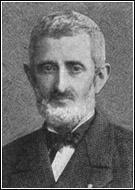
Born: 1823
Died: 1900
Elijah Benamozegh, also known as Elia or Eliyahu, was an Italian Sephardic Orthodox rabbi and renowned Kabbalist who was born in 1823 and passed away on February 6, 1900. He was regarded in his day as one of the foremost Jews scholars in Italy. His name and accomplishments are currently honored by the "Piazza Benamozegh" in Livorno, where he served as rabbi of the significant Jewish community for fifty years. His most famous work is Israel and Humanity (1863), which Dr. Mordechai Luria translated into English in 1995.
In Livorno, he was born. Elijah was only four years old when his parents, Jews from the Maghreb who were inhabitants of Fez, Morocco, died. He started school early and received instruction in Hebrew, English, and French, excelling in the latter. He also received instruction in the elementary sciences. Fluent in many languages, Benamozegh later dedicated his time to the study of philosophy and theology, which he worked to unify.
At the age of 25, he started a job in business and spent all of his free time studying. However, his natural interest in science and his active religious life eventually led him to give up his quest of wealth. He then began to publish scientific and apologetic works, in which he revealed a great attachment to the Jewish religion, exhibiting at the same time a broad and liberal mind. He supported Kabbalah because he cared about Jewish customs. Benamozegh afterwards accepted the position of rabbi and professor of theology at the rabbinical school in his hometown. Despite having other jobs, he continued to write and defend Jewish traditions up until the time of his death in Livorno.
Native name: יוסף חיים מבגדאד
Born: 1 November 1834
Died: 30 August 1909 (aged 73)
Yosef Hayim (1 September 1835 – 30 August 1909) (Iraqi Hebrew: Yoseph Ḥayyim; Hebrew: יוסף חיים מבגדאד) was a famous Baghdadi hakham (Sephardi rabbi), expert on halakha (Jewish law), and Master Kabbalist. He is best known as the author of the halakhic work Ben Ish ai (בן איש חי) ("Son of Man (who) Lives"), which is a compendium of universally applicable laws intermingled with mystical teachings and practices.
When Hayim was 10 years old, he left the midrash (or "school room") and started studying with his uncle David Hai Ben Meir, who would go on to create the Shoshanim LeDavid Yeshiva in Jerusalem. Hayim initially studied in his father's library. He had two sons and a daughter with Rachel, his primary mentor's niece, whom he married in 1851.
Hayim lost his father while he was only 25 years old. He never held the official post of Hakham Bashi, but the Jews of Baghdad accepted him to take his father's place as the city's foremost Torah expert despite his youth. Joseph Shalom, a supporter of Hayim from Calcutta, India, created the Sephardic Porat Yosef Yeshiva in Jerusalem based on his recommendations.
Jacob Obermeyer, a reformer Bavarian Jewish professor who was in Baghdad from 1869 to 1880, and Hayim had disagreements, and Hayim excommunicated Obermeyer. The disagreement was partly brought about by Obermeyer and Hayim's divergent perspectives on Zohar marketing.
Born: 5 September 1884
Jerusalem, Ottoman Empire
Died: 30 July 1953 (aged 68)
Manchester, United Kingdom
Religion: Judaism
He was the son of Rabbis Isaac and Abraham Gaguin and the great-grandson of R. Chaim Abraham Gagin, the first Hakham Bashi of the Holy Land during the Ottoman Empire. He was the great-great grandson of Sar Shalom Sharabi, a renowned scholar and kabbalist.
He was a student of R. Jacob Alfiya at the "Doresh Zion" College in Jerusalem where he studied. He began writing articles for the Palestinian Hebrew Press (Hahhabbezeleth et al.) at a young age on philological, biblical, and traditional Jewish observance-related topics. He received rabbinical degrees from a number of authorities, including R. Haim Berlin and the Chief Rabbis of Palestine, Jacob Meir, C.B.E., and Abraham Kook, C.B.E. Rabbi Gaguine was chosen to work at Cairo's dayyanut office in 1911. He accepted an invitation to serve in Manchester in 1919, and in 1920 he was named Ab Beth Din. He was named Rosh Yeshibah of Ramsgate's Judith Montefiore College in 1927.
He also served as Senior Rabbi of the Spanish and Portuguese Jews Congregation of London's Lauderdale Road Synagogue in Maida Vale.
His son, Rabbi Dr. Maurice Gaguine, was the rabbi of the Spanish and Portuguese Jews of Withington.
Born: Amram Aburbeh
March 16, 1892
Tétouan, Morocco
Died: December 20, 1966 (aged 72)
Petah Tikva, Israel
Religion: Judaism
Nationality: Moroccan/Israeli
Spouse: Rivka Hacohen
Children 5 sons
1 daughter
Parents: Rabbi Shlomo Aburbeh
Yocheved Khalfon
Alma mater: Porat Yosef Yeshiva
Occupation: Rabbi Judge and teacher
Buried: Segula cemetery Petah Tikva, Israel
Dynasty: Aburbeh
Semicha: Rabbi Yosef Haim HaCohen
Amram Aburbeh, also written Abourabia and Aburabia, was the Chief Rabbi of the Sephardic congregation in Petah Tikva, Israel, and the author of Netivei Am, a compilation of responsa, sermons, and Torah teachings. Amram Aburbeh was born in 1892 and died in 1966.
Rabbi Amram Aburbeh, a well-known philanthropist, is listed on the donor lists of two synagogues: The Avraham Memorial of the Ma'araviim congregation and Bayit VaGan of 100 mill (currency) and 50 mill (currency), respectively. He made numerous donations to the Sephardic General Orphanage in Jerusalem between the years 1940 and 1943. He was an active Zionist, and took part in the struggle to establish the state of Israel.
The Chief Rabbinate of Israel Council chose Aburbeh to lead the Petah Tikva Sephardic congregation in 1951. He worked alongside Rabbi Reuven Katz, the city's chief Ashkenazi rabbi. Several downtown Petah Tikva synagogues, including Beth Israel, Ohel Chaim, and Beit Avraham, hosted lectures by Aburbeh (called the "Great Sephardic Synagogue", which he founded). He lectured in other neighborhoods on Shabbat. He served as chairman of the National Rabbinical Council of the Sephardic community and a member of the Chief Rabbinate of Israel Council.
Aburbeh passed away on December 20, 1966 (7 Tevet 5727) in Petah Tikva, where he was buried next to his wife, Rivka, in the Segula cemetery.
Born: 1885-05-16
London, England, United Kingdom
Died: 1970-12-01
New York City, United States
Religion: Judaism
Spouse: Tamar (née Hirschensohn) de Sola Pool
Children: Ithiel de Sola Pool (1917–1984) Dr. Naomi de Sola Pool
Parents: Eleazar Solomon Pool and Abigail Pool
Alma mater: Hildesheimer Rabbinical Seminary:
Berlin, Germany Heidelberg University
Occupation: Rabbi
Position: Rabbi
Synagogue: Congregation Shearith Israel
New York City, New York, United States
Began: 1907
The foremost Sephardic rabbi in the United States during the 20th century was David de Sola Pool (Hebrew: דוד די סולה פול; 1885-1970). A scholar, author, and civic leader, he was a world leader of Judaism.
Descended from a long-established and illustrious family of rabbis and intellectuals with roots in medieval Spain, de Sola Pool was born in London, England. His great-great grandfather was Haham Raphael Meldola, a well-known English Rabbi, and his great-great grandparents were Rabbi (R.) David Aaron de Sola and Rebecca Meldola. He was also connected to R. Henry Pereira Mendes, Dr. Frederick de Sola Mendes, and R. Abraham de Sola.
He went to the University of London to study. He received his summa cum laude in ancient languages from the University of Heidelberg.
The oldest Jewish congregation in the country, Congregation Shearith Israel in New York City, which is also known as the Spanish and Portuguese Synagogue, invited de Sola Pool to take on the position of assistant rabbi in 1907. Up until 1919, he assisted H. Pereira Mendes as the community's rabbi. When the synagogue was unable to locate a successor for Mendes after his 1920 retirement, he returned to take over as head rabbi in 1921 after having departed to serve in Israel.
De Sola Pool was a recipient of honorary doctorates in Divinity, Hebrew Letters, Humane Letters, and Sacred Theology.
De Sola Pool, who is revered and admired all over the world, united pastoral and spiritual responsibilities with academic pursuits and civic service. De Sola Pool was a prominent figure in Sephardic Jewry worldwide and among the top leaders of American Jewry.
De Sola Pool's letters was featured in a small exhibition put on by the American Sephardi Federation in 2012.
Born: September 12, 1889
Rissani, Morocco
Died: January 8, 1984 (aged 94)
Netivot, Israel
Religion: Judaism
Spouse: Precha Amsalem
Miriam Abuhatzeira
Simi Abuhatzeira
Parents: Rabbi Mas'ud Abuhatzeira
Successor: Baba Baruch
Buried: Netivot
Israel Abuhatzeira, often known as the Baba Sali (Hebrew: ר׳ יִשְׂרָאֵל אַבּוּחַצִירָא; literally, "Praying Father"), was a prominent Moroccan Sephardic rabbi and kabbalist who lived from 1889 to 1984. He was well-known for his reputed capacity to perform miracles through prayer. His grave in Netivot, Israel, is now a shrine where people pray and make requests.
Abuhatzeira arrived in Israel in 1951 and stayed in Lod, where he made an effort to remain anonymous. He was quickly identified, though, and given the chance to become the Chief Rabbi of Lod, which he turned down. He afterwards relocated to Baka, Jerusalem, where for a while he was able to maintain a low profile without even his neighbors knowing who he was. Once more, he was eventually "found," and in 1953, upon the passing of Chief Rabbi of Israel Ben-Zion Meir Hai Uziel, he was given the opportunity to accept the position, which he also declined.
Abuhatzeira returned to his native country of Morocco to guide and uplift the community there after learning that Jewish life there had significantly deteriorated spiritually a number of years after his arrival in Israel. He went back to Israel in 1964 and moved quickly to the Negev city of Netivot. He was visited by people from all over who sought his blessings and counsel.
Abuhatzeira passed away in 1984. (4 Shevat 5744). His funeral was attended by an estimated 100,000 people. In Israel, visitors frequently visit his cemetery in Netivot. Thousands of people visit his grave on the anniversary of his passing and offer prayers.
Born: December 15, 1912
Travnik, Austria-Hungary
Died: December 22, 1994 (aged 82)
New York City, United States
Solomon Gaon attended the yeshiva in Sarajevo after being born in Travnik, Yugoslavia, in 1912. Both his parents were slaughtered in the Holocaust. He was ordained as a rabbi by Jews' College in London. He was appointed Haham (Chief Rabbi) of the British Commonwealth's Sephardic congregations in 1949. With Alan Mocatta, he is credited with revivifying a failing town. He began working with Yeshiva University in New York in 1963, originally on a part-time basis, and played a key role in the establishment of the school's Sephardic Studies Program.
Some members of Dr. Gaon's London congregation disagreed with him about his international activities, so he left under trying circumstances. A vote in 1977 to step down as spiritual leader came down to a 75-75 tie that was only overturned by the president of the Mahamad (council). The divide in the neighborhood grew wider after his departure. As of yet, Haham has no elected successor. The "Spiritual Head" position belonged to Rabbi Abraham Levy until his retirement in 2012.
Born: Yitzhak Diba
c. 1898
Baghdad, Iraq
Died: 28 January 2006
Jerusalem, Israel
Religion: Judaism
Nationality: Israeli
Denomination: Sephardic Haredim
Occupation: Rabbi, kabbalist
Yitzhak Kaduri, sometimes spelled Kadouri, Kadourie, and Kedourie, was a well-known Mizrahi Haredi rabbi and kabbalist who dedicated his life to Torah study and prayer on behalf of the Jewish people. He was born in 1898 and died on January 28, 2006. He propagated and used the Rashashi kavanot. His blessings and amulets were also commonly sought to cure persons of ailments and infertility. He never wrote or published any religious materials in his lifetime. His age was between 103 and 108 at the time of his passing, and the year of his birth is still up for debate.
His funeral, which was place in Jerusalem, attracted more than 500,000 mourners, making it the biggest funeral in Israel's history.
Born: Mordechai Eliyahu
March 3, 1929
Jerusalem
Died: June 7, 2010 (aged 81)
Jerusalem
Religion: Judaism
Nationality: Israeli
Parents: Salman and Mazal Eliyahu
Denomination: Hardal
Predecessor: Ovadia Yosef
Successor: Eliyahu Bakshi-Doron
Mordechai Tzemach Eliyahu was an Israeli rabbi, posek, and spiritual figure who lived from March 3, 1929, to June 7, 2010, according to the Hebrew calendar.
Eliyahu, a young member of the extremist religious movement Brit HaKanaim, was the son of a Jerusalem-based Kabbalist. He worked as a dayan at Jerusalem's Supreme Rabbinical Court and in Beersheba. From 1983 to 1993, he was the Rishon LeZion, or Chief Rabbi, of Israel.
Eliyahu, a founder of Religious Zionism, had a key role in converting many of its adherents to the religious right, giving rise to the Hardal movement. Eliyahu, who backed Meir Kahane and Jonathan Pollard, voiced his opposition to Israel's withdrawal from Gaza.
Eliyahu suffered complications from a cardiac disease and passed away at age 81. On Jerusalem's Har HaMenuchot, he was laid to rest.
Born: Abdullah Youssef
September 24, 1920
Baghdad, Iraq
Died: October 7, 2013 (aged 93)
Jerusalem
Religion: Judaism
Nationality: Israeli
Spouse: Margalit Fattal
Children: 11, including Yitzhak Yosef, Ya'akov Yosef and Adina Bar-Shalom
Parents: Yaakov and Gorjiya Ovadia
Denomination: Sephardi Haredi Judaism
Alma mater: Porat Yosef Yeshiva
Occupation: Author, Politician, Rabbi, Talmudic scholar, and recognized halakhic authority
Predecessor: Yitzhak Nissim
Successor: Mordechai Eliyahu
Position: Sephardi Chief Rabbi of Israel
Organization: Chief Rabbinate of Israel
Began: 1973
Ended: 1983
Other: Sephardi Chief Rabbi of Tel Aviv
Spiritual leader of the Shas political party
Buried: Sanhedria Cemetery
Residence: Jerusalem
Semicha: Rabbi Ben Zion Hai Uziel
Ovadia Yosef was an Iraqi-born Talmudic scholar, a posek, the Sephardi Chief Rabbi of Israel from 1973 to 1983, and the founder and longtime spiritual head of Israel's ultra-Orthodox Shas party. He was also known by his Hebrew name Ovadia Yosef and Arabic name Abdullah Yusuf. In Haredi circles, Yosef's responsa were widely respected, especially in Mizrahi groups where he was revered as "the most important living halakhic authority." He was nonetheless chastised for making numerous derogatory statements about his opponents which made him a controversial character in his final years.
Title: Chief Rabbi of Israel
Born: Shlomo Moshe Amar
1948 (age 73–74)
Casablanca, Morocco
Religion: Judaism
Nationality: Israeli
Spanish (honorary)
Denomination: Orthodox
Residence: Jerusalem
Shlomo Moshe Amar, a Sephardic Chief Rabbi of Israel (Hebrew: שלמה משה עמאר; born 1948), served as the country's previous head of sect. From 2003 to 2013, he held the office of Rishon LeZion; Yona Metzger was his Ashkenazi equivalent throughout that time.
Eliyahu and Mima (Miriam) Amar were in Casablanca, Morocco when their son Shlomo was born. When Shlomo was 14 years old, his family emigrated to Israel in 1962. He was good friends with Ovadia Yosef, the former chief rabbi of the Sephardi community and the spiritual leader of the Shas party. Amar presided over the Petah Tikva Rabbinical Court prior to being named one of the two Chief Rabbis of Israel. He became Tel Aviv's first and only Chief Rabbi in 2002 after winning the election.
Born: unkown
The Hakham-Emeritus (Chief Rabbi) of Amsterdam and the Dutch Jews of Spanish and Portuguese descent is Dr. Pinchas Toledano. Additionally, he served as the Beth Din's recognized Chief Rabbi in the Netherlands.
He studied at numerous yeshivot in Israel and England, graduating with semikha at the age of 20. He graduated from London University with a BA Hons in Semitics in 1969. He earned his PhD from London University in 1980.
He was named Dayan of the London Sephardi Community in 1974, and Av Bet Din in 1980. He was named Dayan of the Dutch Sephardi Beth Din in 1998. In 2012, he was chosen to serve as the Hakham of the Dutch community of Spanish and Portuguese speakers. He has been Hakham-Emeritus since 2020.
Born: 17 May 1975
Los Angeles, California
Religion: Judaism
Nationality: American
Spouse: Margalit Dweck (née Bar Shalom)
Children: 5
Denomination: Sephardi
Predecessor: Rabbi Dr Abraham Levy OBE
Position: Senior Rabbi
Organization: The S&P Sephardi Community, UK
The senior rabbi of the S&P Sephardi Community of the United Kingdom is Joseph Dweck.
Rabbi Dweck was born in the United States, is of Syrian-Sephardi descent, and has lived in Brooklyn and Los Angeles. His teachers at Hazon Ovadia Yeshiva in Jerusalem were Rabbi Yitzhak Yosef, the current Rishon LeZiyon, and Rabbi Ovadia Yosef, a former Rishon LeZiyon and the Sephardi Chief Rabbi of Israel.
In a foreword to Rabbi Dweck's book on Jewish blessings, Birkhot Shamayim, Rav Ovadia Yosef described Rabbi Dweck as his "heart's desire" and "the revered Rabbi who brings merit to the community."
Under the supervision of the Sephardic Rabbinical College of Brooklyn, New York, Rabbi Dweck earned his semikha (rabbinic ordination) from Rav Ovadia Yosef.
He wed Margalit Bar Shalom in 1995, the granddaughter of Rav Ovadia Yosef and the daughter of Dayan Ezra Bar Shalom and Adina (Yosef) Bar Shalom.
At the YULA Kollel in Los Angeles, Rabbi Dweck studied for three years (1996–1999) under Rabbi Nachum Sauer. He relocated to Brooklyn, New York, in 1999 with his wife and oldest son in order to enroll as a fellow at the newly founded Sephardic Rabbinical College, run by Rabbi Shimon Alouf, where he studied for the following seven years.
He completed his undergraduate work in liberal arts at Excelsior College in Albany, New York, as well as psychology and philosophy courses at Santa Monica College in Los Angeles. He has a tendency toward reason. In association with the London School of Jewish Studies, Middlesex University awarded him a Master of Arts in Jewish Education.
Born: 1960
Beirut, Lebanon
Occupation: Rabbi (full-time)
Gastroenterologist (part-time)
Spouse: Elise Eichler
In the United Arab Emirates, Elie Abadie serves as Senior Rabbi of the Jewish Council of the Emirates. In addition, Abadie served as the previous director of Yeshiva University's Jacob E. Safra Institute of Sephardic Studies. He has a special interest in Sephardic Judaism, history, philosophy, and comparative traditional law. He serves as co-president of Justice for Jews from Arab Countries and is a board member of the World Sephardic Educational Center and the American Sephardi Federation. He served as a former board member and officer of the Rabbinical Council of America (RCA), vice-president and treasurer of the New York Board of Rabbis, and co-chair of the committee that will decide whether to award the Sadat Congressional Gold Medal.
Visually interact and learn about our nearly 6000 year history.
An interactive tour through our rich heritage spanning from 900 B.C.E.
Learn about our numbers, languages and population.
The greatest minds, philosophers and authors of their time.
Everything you wanted to know about Sephardic customs.
Learn our traditions for brit to marriage and bereavement.
Food is the universal thing that has the power to bring people together.
Listen to the rich repertory of Sephardi music and prayers.
Connect to our calendar for the latest events and happenings.
Read real-time updates as the relates to the Sephardic world.
We welcome you to join us virtually for Shacharit and Arvit.
Make new friends while expanding your mind. Quarterly. Join now.
View the full list of every Jewish holiday and observance.
Browse through our recommended reading list of over 100 books.
Download our guides to help you plan for the Holidays.
We welcome all in need of prayer, healing or Kaddish.
Get notified about new articles

Login to your account
Get notified about new articles